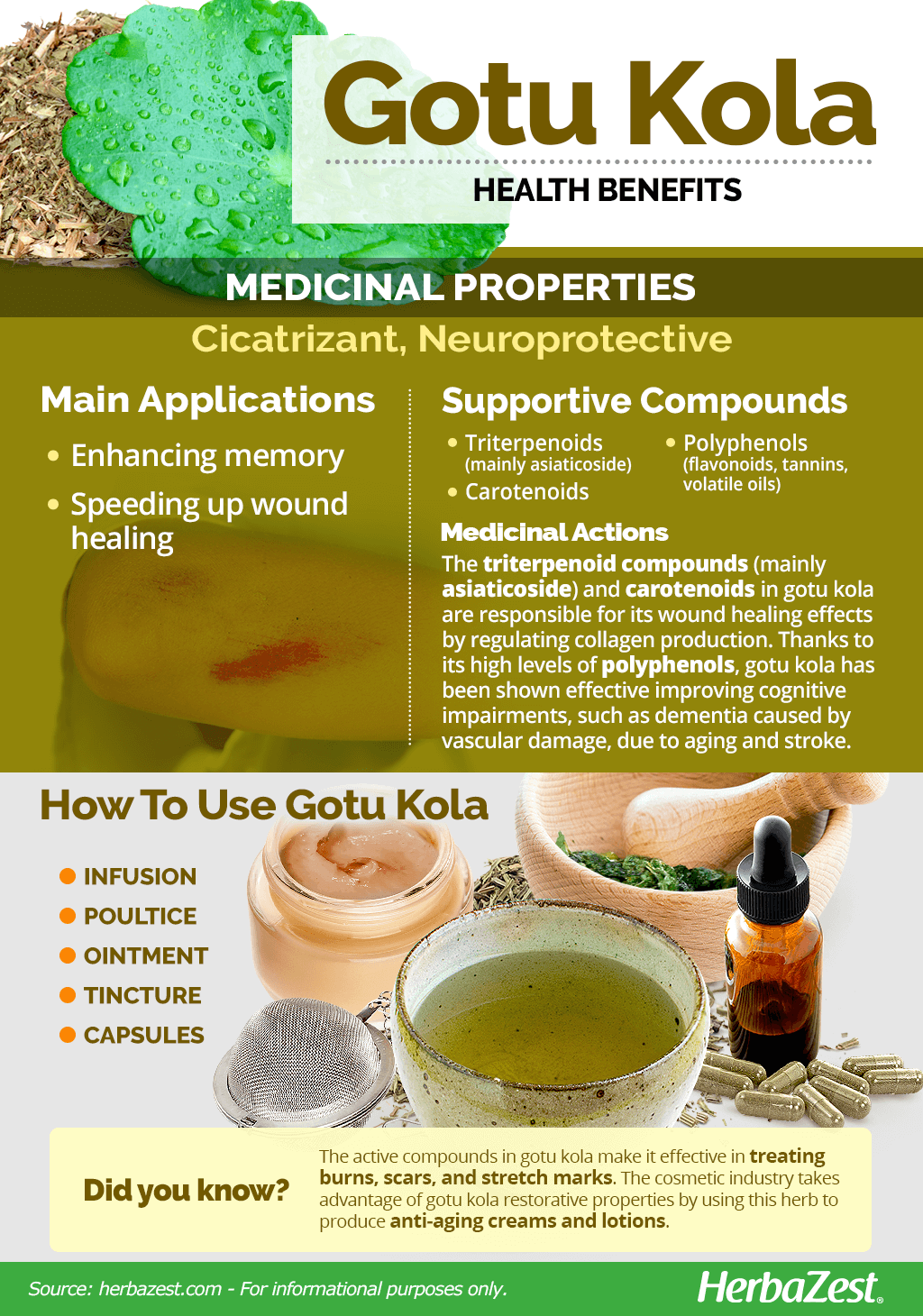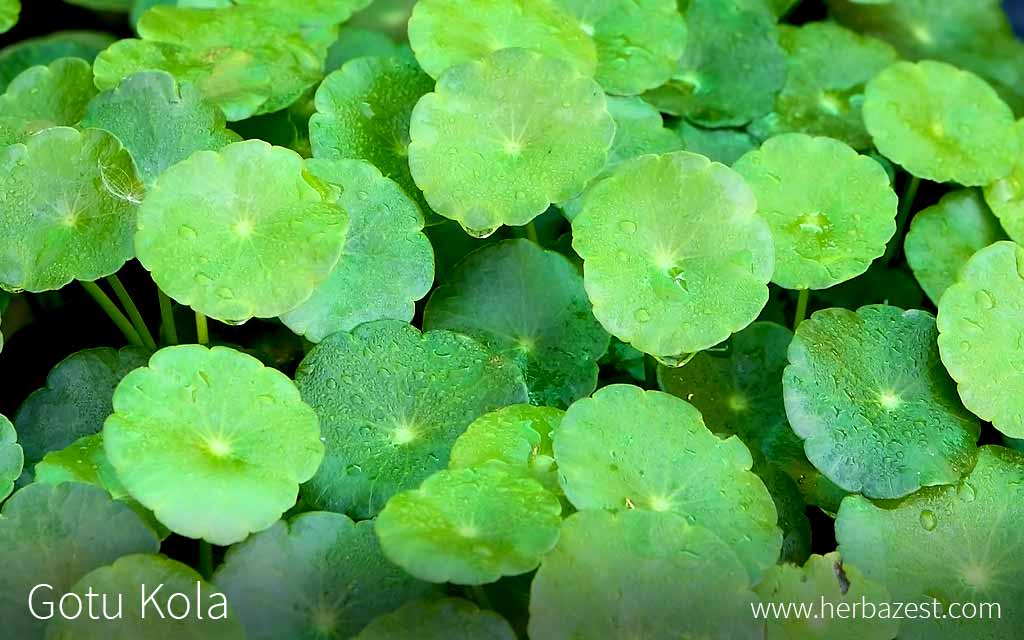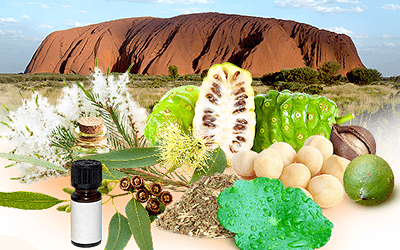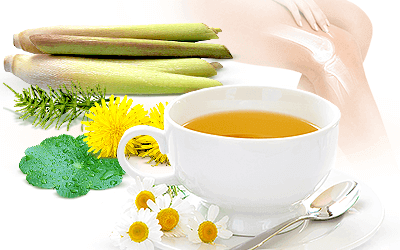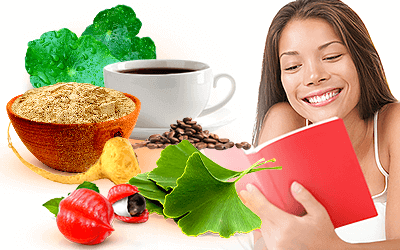Gotu kola is an herb native to Southeast Asia whose history dates back to ancient times. It has been continuously used as an effective remedy for various ailments, which has allowed its popularity to spread throughout the world.
Gotu Kola Medicinal Properties
- Medicinal action Cicatrizant, Neuroprotective
- Key constituents Triterpenoids (asiaticoside), carotenoids, polyphenols
- Ways to use Capsules, Hot infusions/tisanes, Tincture, Poultice, Ointment
- Medicinal rating (2) Minorly useful plant
- Safety ranking Use with caution
Health Benefits of Gotu Kola
Science has shown that there are several active ingredients behind gotu kola's properties. These are some of the main benefits of gotu kola:
Enhancing memory. The neuroprotective properties of gotu kola has shown to improve cognitive function in people with Alzheimer's disease and various age-related diseases.
Speeding up wound healing. Gotu kola's ability to stimulate collagen production and blood flow has been traditionally used for quickening scarring after burns or injuries.
Though research is still limited, gotu kola's properties may play a part in the treatment of the following:
Preventing stretch marks. The active compounds in gotu kola help strengthen the skin, thus reducing the occurrence of stretch marks.
Treating venous insufficiency. Gotu kola can reduce swelling and leakage from blood vessels.
Decreasing joint pain. A preliminary study has found that gotu kola can diminish pain and skin hardening associated with scleroderma.
How It Works
Gotu kola possesses triterpenoid compounds (mainly asiaticoside), which are responsible for improving age-related cognitive deficits by stimulating vascular activity in the brain.1,2 They also play a key role in its wound healing effects by stimulating collagen production.3
Goty kola's content also includes high levels of carotenoids as well as polyphenols, mainly flavonoids, volatile oils, and tannins, all of which are credited for the regenerative, anti-aging properties of this herb.
Another reason for gotu kola's varied medicinal properties is its high nutritional value. The herb contains large amounts of vital nutrients, including B-group vitamins and vitamin C (ascorbic acid), calcium, iron, serine, lysine, magnesium, and glutamate.
Triterpenoids are thought to strengthen the skin, which can make gotu kola effective in treating burns, scars, stretch marks, and even cellulitis.
Aloe and jojoba also speed up wound healing, whereas ginkgo and rosemary increase blood circulation.
Gotu Kola Side Effects
Side effects are rare, but may include skin allergies and burning sensations if the herb is applied externally in high doses. Headaches, stomach upset, nausea, dizziness, and extreme drowsiness can be the consequence of oral use.
Gotu Kola Cautions
Children, as well as those with a history of skin cancer or suffering liver disease, should not take gotu kola. It can also interact with liver medications, statins, diabetes medications, diuretics, and sedatives.
The herb should not be used for longer than six weeks at a time, except under medical supervision.
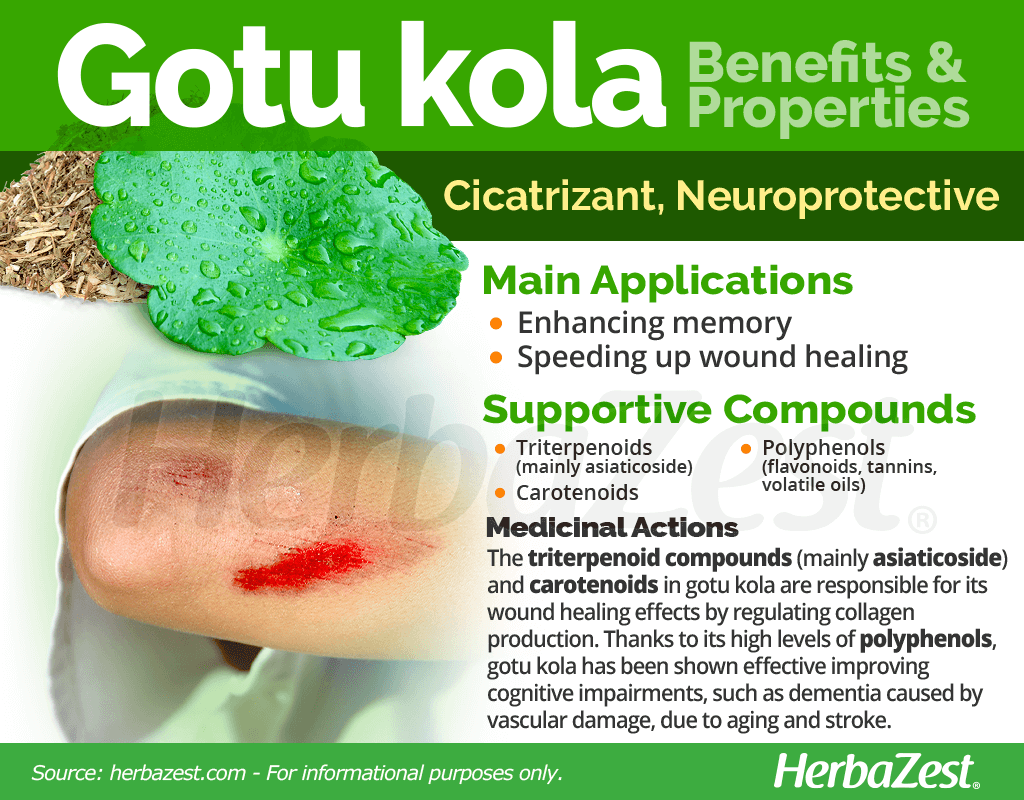
How to Consume Gotu Kola
- Edible parts Leaves
- Edible uses Flavoring, Protein
- Taste Acrid, Bitter
It is not common for people to eat raw gotu kola; however, its nutritional value remains particularly potent in this form. Gotu kola is also used as a leafy green in Sri Lankan cuisine and normally accompanies curries or seasons rice. It is a popular addition to many vegetarian meals. In Indonesia, the gotu kola leaves are commonly used in salads.
While gotu kola does have culinary applications, it is mostly used as medicine. Herbal preparations are made from the leaves and stems, which are sometimes powdered.
Natural Forms
Infusion. The dried leaves can be brewed into a warm tisane. Gotu kola tea improves circulation and eases digestion.
Poultice. The crushed gotu kola leaves or gotu kola powder can be hydrated in warm water and used topically for treating skin ailments.
Herbal Remedies & Supplements
Ointment. This preparation can be applied over the skin to reduce irritation. It is also used for cosmetic purposes.
Tincture. Between 30 - 60 drops of this concentrated preparation can be diluted in a glass of water and taken two to three times daily.
Capsules. This popular supplemental form provides a consistent dosage of gotu kola's active ingredients.
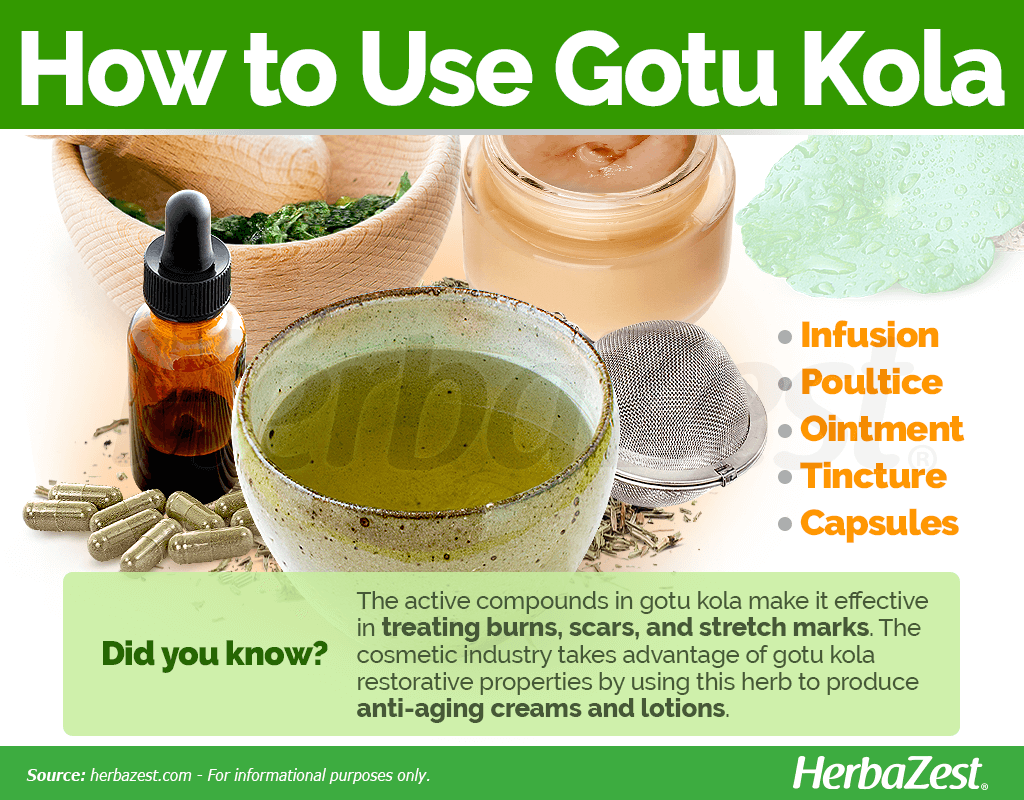
Growing
- Life cycle Perennial
- Harvested parts Leaves
- Growing habitat Swamps and marshlands
The gotu kola plant is found growing in swampy areas of most tropical and subtropical countries, including parts of India, Pakistan, Sri Lanka, Madagascar, South Africa, the South Pacific, and Eastern Europe.
Growing guidelines
The gotu kola plant grows best in moisturized marshlands, such as riverbanks.
Tropical climate conditions are also required as this is its natural habitat.
Gotu kola tends to be harvested from the wild rather than grown in nurseries or in specific fields.
Additional Information
- Other uses Cosmetics, Repellent
Plant Biology
Gotu kola is a perennial, herbaceous creeper that has small fan-shaped green leaves, with white or light purple-to-pink or white flowers, and it bears small oval fruit.
Classification
Gotu kola (Centella asiatica) is a member of the Apiaceae family, which comprises around 434 genera and 3,700 species of flowering plants, including carrot (Daucus carota), celery (Apium graveolens), and parsley (Petroselinum crispum).
Varieties and Subspecies of Gotu Kola
The Centella genus consist of only three species that can be found growing wild in many areas of the world, slightly varying in appearance depending on their surrounding conditions. Despite this, it is typical for their roots to give rise to reddish stolons. C. asiatica does not have any botanical varieties or subspecies.
Historical Information
Gotu kola first appeared in medicinal lore as part of the Indian Ayurvedic medicinal system, around 1,100 - 500 years BCE. Over the centuries, gotu kola has been used as a leafy green vegetable in Bangladesh, Thailand, and Sri Lanka. It wasn't until the late 19th century, however, that it became recognized as a valid, botanical medicine.
Gotu kola was carried by tiger hunters in India as a way of healing potential wounds resulting from encounters with these animals.
Popular Beliefs
It has been referred to as the "fountain of life" because it is said that a Chinese herbalist who took gotu kola lived for two centuries.
Economic Data
Gotu kola is one of the most cultivated herbs in Southeast Asia, with India being its biggest producer. It is grown for both herbal medicine and culinary purposes. Gotu kola tends to have low yields, usually producing just 1,000 pounds (450 kg) per acre.
Other Uses
In addition to being used in food and medicine, gotu kola can also be used as a mosquito repellent. The oil of the plant has also been used in the production of soaps and shampoos.
Sources
- Clinical and Experimental Pharmacology & Physiology, Effect of Centella asiatica on cognition and oxidative stress in an intracerebroventricular streptozotocin model of Alzheimer's disease in rats, 2003
- Indian Journal of Pharmaceutical Sciences, Pharmacological Review on Centella asiatica: A Potential Herbal Cure-all, 2010
- USDA Plants Database, Plant Profile for Centella asiatica
- Encyclopedia of Herbal Medicine, p. 132
- American Cancer Society, Gotu Kola
- New York University - Langone Medical Center, Gotu Kola
- University of Maryland Medical Center, Gotu Kola
Footnotes:
- Evidence Based Complementary and Alternative Medicine. (2916). Effectiveness of Gotu Kola Extract 750 mg and 1000 mg Compared with Folic Acid 3 mg in Improving Vascular Cognitive Impairment after Stroke. Retrieved February 10, 2022, from: https://www.ncbi.nlm.nih.gov/pmc/articles/PMC4908235/
- Digest Journal of Nanomaterials and Biostructures. (2008). EFFECT OF CENTELLA ASIATICA ON MILD COGNITIVE IMPAIRMENT (MCI) AND OTHER COMMON AGE-RELATED CLINICAL PROBLEMS. Retrieved February 10, 2022, from:
https://www.researchgate.net/profile/Kishor-Patwardhan/publication/201910063_Effect_of_Centella_asiatica_on_mild_cognitive_impairment_MCI_and_other_common_age-related_clinical_problems/links/0922b4f799f1c673ce000000/Effect-of-Centella-asiatica-on-mild-cognitive-impairment-MCI-and-other-common-age-related-clinical-problems.pdf - International Journal of Dermatology. (2004). Asiaticoside induction for cell-cycle progression, proliferation and collagen synthesis in human dermal fibroblasts. Retrieved February 10, 2022, from: https://pubmed.ncbi.nlm.nih.gov/15533060/
